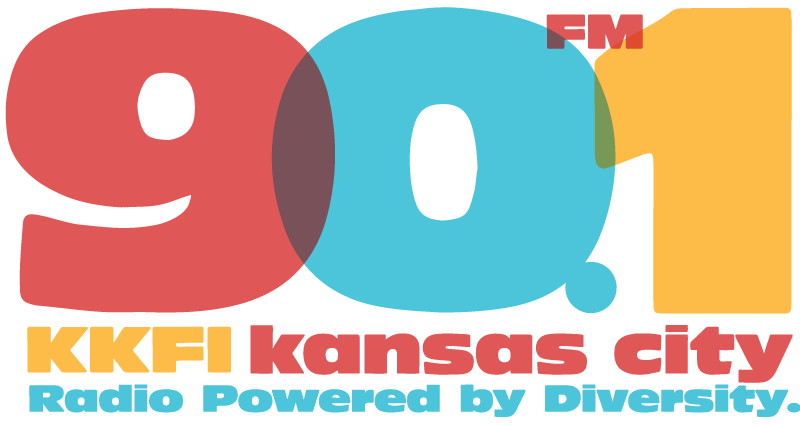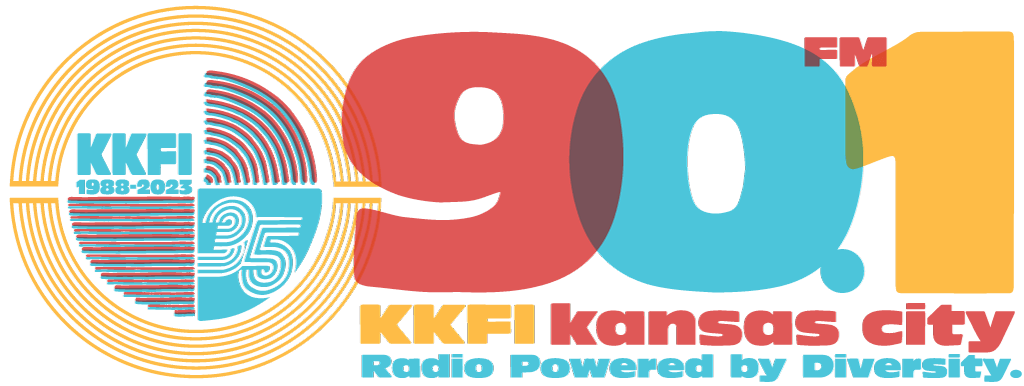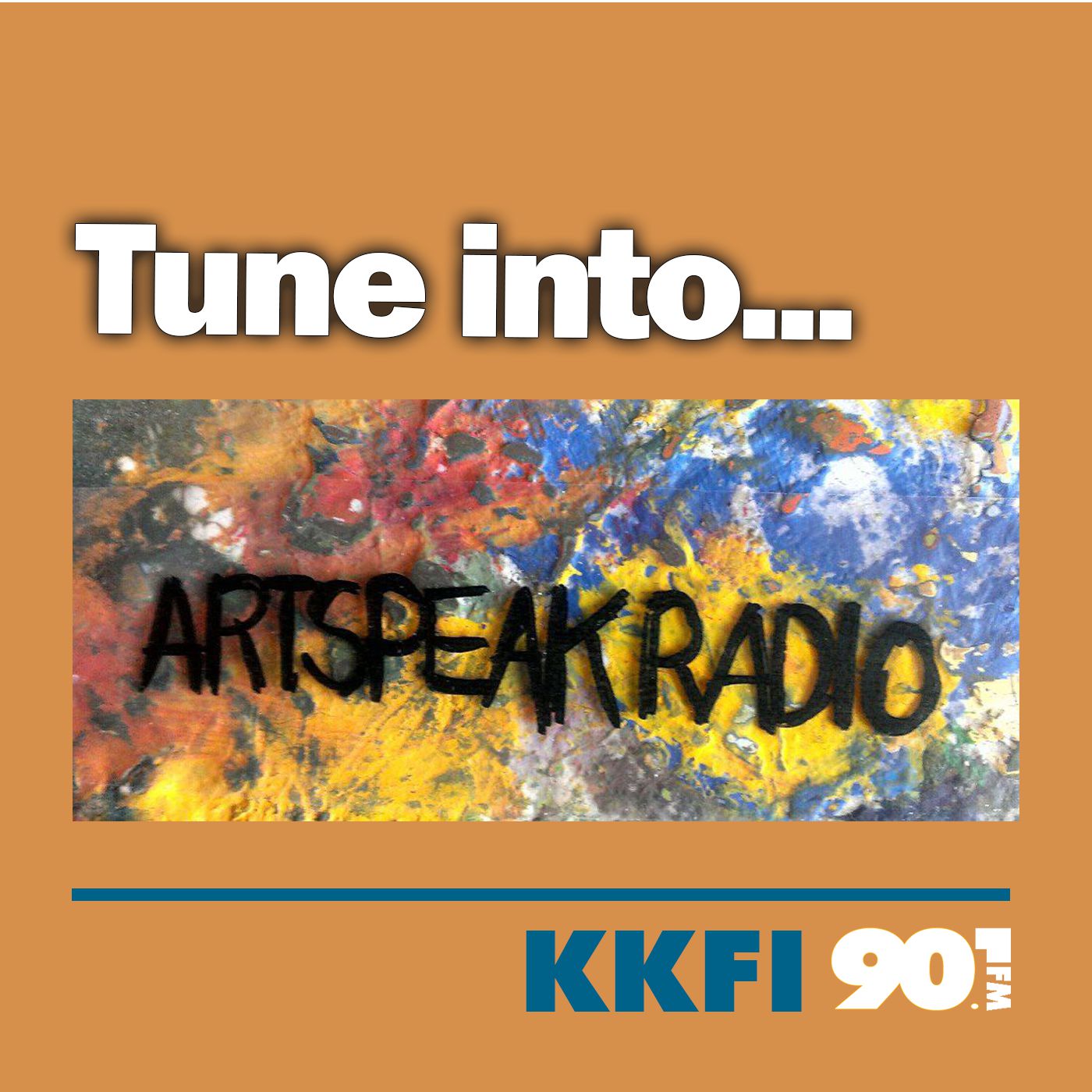Wednesday May 17, 2017 Host/producer of ARTSPEAK RADIO, Maria Vasquez Boyd talks with activist Kar Woo, writer MG Salazar, artist Mike Lyon, photographer Kelly Powell, & community organizer Martha Gershon.
Kar Woo-Artists Helping the Homeless (AHH) is more than it may appear from its name – unique among the numerous organizations in Kansas City that serve the homeless. AHH is the Safety Net for the Safety Net, the organization that makes other organizations more effective, and the agency that works with the chronically homeless from the street to success.
Sculpture in the Saint Luke’s Healing Garden
Artists Helping the Homeless was the inspiration of Kar Woo, its founder and current executive director. Kar was an artist and owner of a business located in midtown Kansas City. He saw the homeless gather at a park near his shop and wanted to help, beginning by serving them dinner on Sunday evenings and providing them clothes. He started to expand his assistance, enlisting area churches to help. His passion to serve this population and his desire to target the aid led to his decision to form Artists Helping the Homeless as a 501C3 not-for-profit.
Aided by the organization’s board and staff, over the last four years Kar has built the program into an indispensable resource for the homeless and the organizations and agencies that deal with the homeless every day, such as hospitals, police and shelters.
Artists Helping the Homeless assists in several ways when a person or family is most in need or when the person does not meet their service criteria.
AHH is the last resort contact when a homeless person needs help on the street; a hospital is ready to discharge a homeless person and no appropriate discharge alternatives are apparent; the police are releasing or have picked up a homeless person, but jail is not the right place for them; and a shelter or other homeless facility or agency has no more room or needs other supportive services.
AHH is known for taking on the most challenging clients within the chronic homeless population, as many of those served are dealing with drug abuse and mental health issues and may have suffered abuse and victimization while living on the streets or in shelters. AHH’s one-of-a-kind approach has created trust within this community, operating several vans to provide transportation and aid at the time of greatest vulnerability– from early evening to well into the night.
AHH addresses the immediate need by meeting homeless people where they are and evaluating the short- and long-term needs , and accessing urgent assistance–usually shelter, medical care, a meal or removal from a threatening situation.
AHH works on long-term needs by finding permanent housing;
arranging for admission into detox, inpatient treatment and transitional living program reuniting homeless persons with their families; filling gaps that other homeless services cannot provide; and/or supporting individuals to follow through on all of their commitments.
AHH operates two vans during the day to provide a continuum of care through long-term support, entry into assistance programs and help the homeless fulfill their commitments to these programs. Some of this assistance can be for a few days, sometimes for a few months, and sometimes for years.
www.artistshelpingthehomeless.org
ARTISTS HELPING THE HOMELESS – A NON-PROFIT ORGANIZATION LENDING A HELPING HAND ONE STEP AT A TIME
EMAIL: [email protected] • 3625 Warwick Blvd., Kansas City, MO 64111 • PHONE: 816-668-1007
MG Salazar-Striking the Black Snake: Poems of Standing Rock by MG Salazar is a wild and raw book in equal parts manifesto, testimonial, how-to-manual, and confessional. Written during the winter of 2016-2017 after Salazar’s “calling” to travel to the Oceti Sakowin Camp in North Dakota to be a water protector and prevent the construction of the Dakota Access Pipeline, the poems chronicle the struggles and trials of the protesters, look deeply at those behind the crop dusters and riot gear, and speak to the children of the future, for whom the water must be preserved.
But this book is more than a call to a shared humanity. It is a journal of discovery and purpose in search of a code in which the heart, the voice, and the tears—the primordial gifts of the Creator—can make a being whole, and its poems are a liturgy couched in terms of a personal narrative that investigates the poet themselves: their life-long sense of alienation, their struggles with addiction, the acceptance of their identity, and the need to contribute meaningfully to future generations by standing up for the rights of indigenous peoples and the health of our planet.
Salazar, who was raised Latinx but discovered through genetic analysis their Native American lineage, shares with us from the ground their perspective of an important moment in U.S. history, which has its roots in a harrowing youth, a whispered and denied ancestry, and the dogged determination to stand like a pillar of salt in the wake of a social and political system intent on destroying rather than creating. The poet also shares their intimate journey, facilitated by their endeavors at Standing Rock, to reclaim an identity that had been lost to colonialism.
The songs of Striking the Black Snake tell not only Salazar’s story but also proudly sing of the strength and endurance of Native peoples, who battle daily the dirge of the black snake, the oil, which the current U.S. government and its corporate partners value more than We the People. This book, therefore, represents the culmination of those songs.
www.39wetpress.com/mg-salazar
Mike Lyon-Until the early 1990’s I practiced the eye-hand coordination required to draw and paint visually (paint what you see). Then I became intensely curious about how image was communicated through the marks I made. I began employing automated procedures and, eventually, electromechanical tools, many of my own design and construction. I continue to be fascinated by marks and mark-making, pattern, aesthetics, the past, and the location of meaning. My recent work is typically produced using traditional tools manipulated by non-traditional means. I’ve designed and built numerous computer-controlled jigs which hold pencils, pens, brushes, airbrushes, flow-pens, etc all moved and actuated via tens of millions of lines of instructions which are generated by computer programs I’ve written.
I began to seriously wonder about my aesthetic sense two decades ago while I experimented with patterns produced by ’tiling’. I was arranging painted tiles in grids using a computer model I invented. I produced hundreds of thousands of designs this way. For example, a minimal 4×4 grid of identical square tiles has more than four trillian (4^16) arrangements (way too many for me to evaluate)! To create a smaller universe, I limited my exploration to symmetrical arrangements. Some patterns were ‘vibrant’, some were ‘elegant’, some were ‘noisy’, some were ‘beautiful’, etc. It has been very difficult for me to understand why a strong connection exists between these congruent tile arrangements and my aesthetic response to each. I eventually realized that my preference developed unconsciously and likely had a genetic/neurological source. It seemed to me that I’d discovered a fundamental boundary between science (what I could understand) and art (what I could feel). This turns out to have deeply influenced all my subsequent work as I try to balance unconscious and conscious. These days, I am mostly making images of heads and figures. I like reflections between my work and art of previous generations. Most of my images parody 18th and 19th century Japanese subject matter (I’ve forever been fascinated by Zen and things Japanese). Lately I’ve become curious about post Renaissance European chalk and charcoal drawing technique, so I’ve been working with light and dark ink crosshatch methods. Now I experiment much more with squiggly cross-hatching than with tiling as I feel my way toward images which cry out to become Art. I’m no longer very concerned with eye-hand coordination. I’ve become deeply involved with what I make and how I make it.
www.mlyon.com
Kelly Powell-“WORDS”, is a series of portraits that reflect a social commentary on how a single word can shape our lives. A word can lift us, crush us, turn us into inspirations or create monsters. Most importantly it can shape our own perspective of ourselves. Words can be raw and emotional and can leave lasting impressions. A word can be the single force that makes us who we are.
These raw portraits represent the choice we make to silence ourselves when hurtful things are said about us in hopes that one day the “WORD” will be forgotten to everyone. The black and white images of these 28 individuals reflect how one word has affected them in their lifetime. Their courage to share their story and vulnerabilities is a testament to how strong and incredible they are despite their word.
Friday, May 19 at 6 PM – 10 PM
Gallery 504-Crossroads KC
504 E 18th St, Ste 103, Kansas City, Missouri 64108
Kelly Powell is a 2014 graduate of UMKC, with a Master’s of Art. She lives in Kansas City, MO where she owns a photography studio in the West Bottoms specializing in wedding, portrait and event photography. Kelly is continuing to further her career in video and film as well as expanding on her conceptual photography.
Martha Gershun-Cloudburst Jewish Poetry Event-Poets of all faith traditions are invited to read their original poems on Jewish themes at our 2nd Annual Jewish Poetry Event. Held in a traditional coffeehouse format including refreshments, the program is open to everyone in the community. Poets may read two short original poems or one long original poem to ensure a wide and diverse experience for the audience.
All forms of poetry are welcome, including traditional verse, free form, Haiku, sonnets, spoken word, and slam poetry. The only requirement is that each poem touch on a Jewish theme.
Sunday 2pm – 4pm
Congregation Beth Torah
6100 W. 127th St. Overland Park, KS
#aratspeakradio
#kkfi901fm





